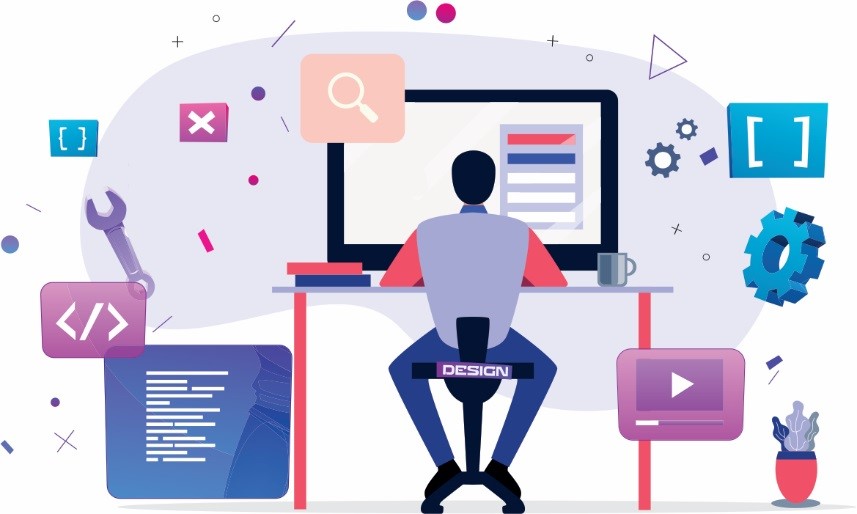Hire Dedicated Developers for Your Next Big Project with Confidence
Hire Dedicated Developers for Your Next Big Project with Confidence
Blog Article
Devoted Developers vs. In-House Teams: Which Is Right for You?
The decision between using committed programmers and preserving an in-house group is a considerable one that can impact the trajectory of your projects and overall service strategy. On the other hand, internal groups contribute to a natural business culture and a nuanced understanding of long-term objectives.
Comprehending Dedicated Designers
The growing demand for specialized abilities in the tech sector has caused the development of specialized programmers as a viable service for many companies. These experts are typically contracted on a job basis, permitting business to take advantage of certain experience without the lasting commitment related to permanent hires. Devoted designers are typically ingrained within a customer's team, providing versatility and scalability to meet project needs.
This model allows companies to access an international ability swimming pool, which is especially useful in a rapidly developing technical landscape. Committed developers can be sourced from numerous geographical locations, making sure that business can discover the best capability at competitive rates. They usually bring a wealth of experience and knowledge, having actually dealt with diverse tasks throughout different industries.
Moreover, specialized designers can concentrate specifically on the tasks available, enhancing productivity and performance. They are geared up to incorporate effortlessly right into existing workflows, working together closely with internal teams to accomplish job objectives. This strategy not only decreases the problem of employment and training however also allows organizations to remain active, adjusting quickly to altering market needs and technical innovations.
Benefits of In-House Teams

In addition, in-house groups tend to have a much deeper understanding of the company's goal, worths, and objectives. This positioning can enhance staff member engagement and motivation, as employee feel much more attached to their work and the organization's success. Furthermore, having a committed internal team enables better positioning of goals and approaches, as these members are regularly focused on the company's top priorities.
In-house teams also facilitate quicker decision-making procedures, as they can respond much more swiftly to changes and challenges. The established connections and familiarity with company protocols enable streamlined operations and lowered miscommunication. Ultimately, the combination of a natural culture, alignment with business goals, and effective interaction makes internal teams a beneficial property for lots of companies, specifically those wanting to cultivate lasting development and advancement.
Expense Factors To Consider
When reviewing price factors to consider, both internal html5 developer teams and devoted programmers present unique economic ramifications for organizations. Engaging dedicated developers generally involves a pay-per-project or hourly price model, which can be cost-effective for businesses with changing task needs. This strategy enables flexibility in scaling resources up or down, making sure that companies just spend for the services they need.
On the other hand, in-house groups entail taken care of costs, including wages, advantages, and overhead expenditures such as workplace and devices. While this version provides higher control and prompt accessibility of sources, it may lead to greater long-lasting expenditures, particularly if the workload does not validate a full-time staff.
Moreover, business need to take into consideration the covert costs connected with employment and training of internal employees, which can better stress budget plans. Sometimes, the time and sources invested in taking care of an internal group can take away from the company's core company objectives.

Project Management and Versatility
Project administration and versatility are vital factors that affect the choice between internal groups and devoted developers. Committed teams usually have established processes for handling tasks effectively, leveraging specific methods like Agile or Scrum, which facilitate iterative development and adaptability.

Eventually, the option between dedicated designers and internal teams pivots on the preferred level of adaptability and the specific task administration requirements. Firms have to examine their functional characteristics, project complexity, and resource schedule to identify which option aligns ideal with their calculated objectives.
Making the Right Selection
Picking the right advancement method-- in-house teams or devoted designers-- calls for a careful evaluation of different aspects that straighten with a company's tactical goals. On the other hand, internal teams can offer much better continuity and integration with existing workers.
Following, examine your spending plan. Committed developers often provide a cost-effective option for short-term jobs, while internal teams may sustain greater long-lasting expenditures as a result of wages, benefits, and expenses prices. Analyze the degree of control and partnership wanted; in-house groups typically cultivate stronger communication and alignment with firm society.
If prompt results are essential, devoted designers can be onboarded rapidly, whereas constructing an in-house team takes time for employment and training. If constant growth is important, spending in an internal team may produce better returns over time.
Verdict
Finally, the decision between sparkle visual web design committed programmers and in-house teams rests on job demands and organizational objectives. Dedicated developers give versatility and specific competence, making them suitable for short-term campaigns. Conversely, in-house teams cultivate a cohesive culture and deeper placement with long-lasting objectives. Mindful evaluation of budget constraints, task timelines, and desired control levels is vital for establishing the most proper technique, making sure positioning with critical priorities and operational performance.
The choice between making use of specialized designers and maintaining an in-house group is a considerable one that can impact the trajectory of your tasks and overall business approach.Task monitoring and versatility are vital factors that affect the selection between dedicated programmers and in-house groups. software development staff augmentation.In contrast, in-house groups may excel in keeping a constant task management structure due to their familiarity with the company's culture and long-lasting goals. Committed developers usually present a cost-effective option for temporary projects, while internal teams might sustain greater long-term expenditures due to incomes, advantages, and expenses costs.In verdict, the decision between committed developers and in-house groups hinges on project needs and business objectives
Report this page